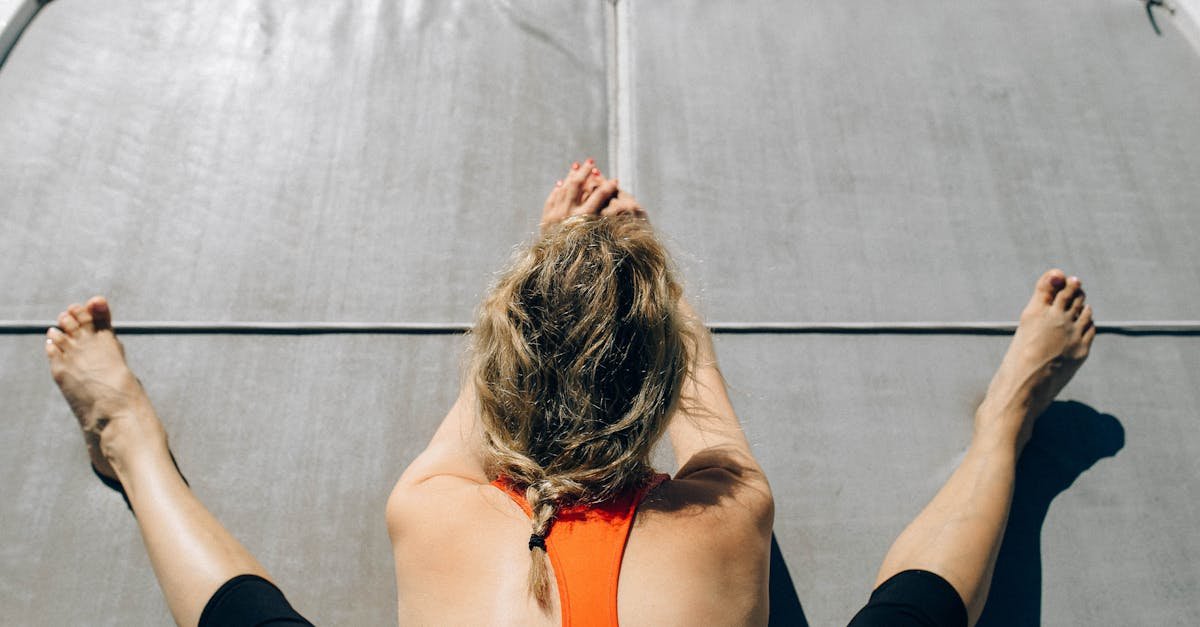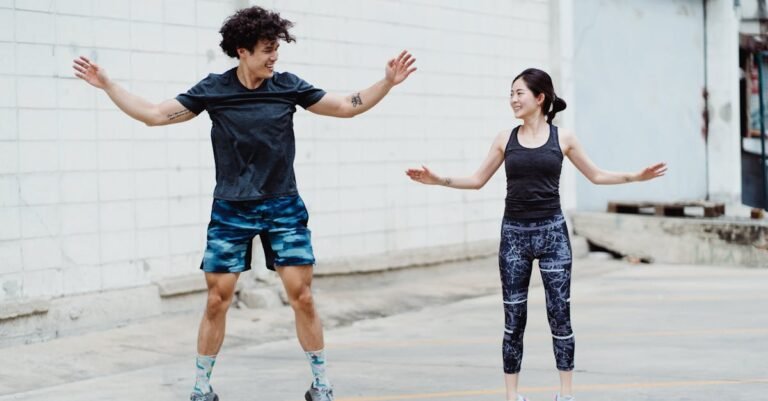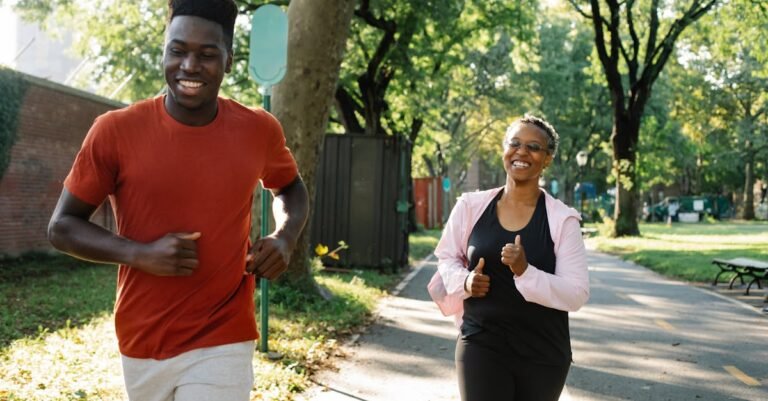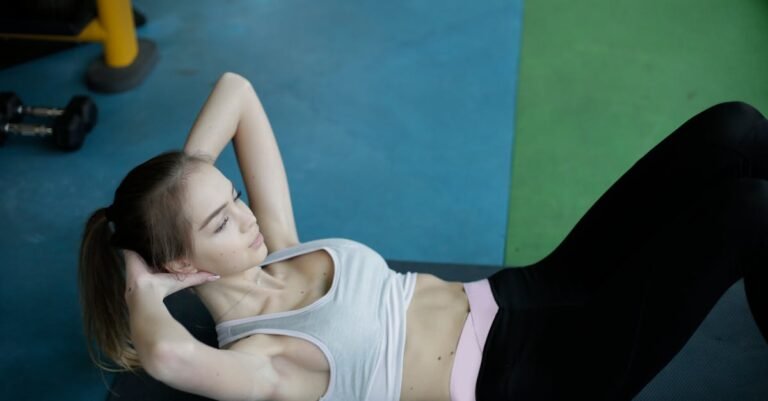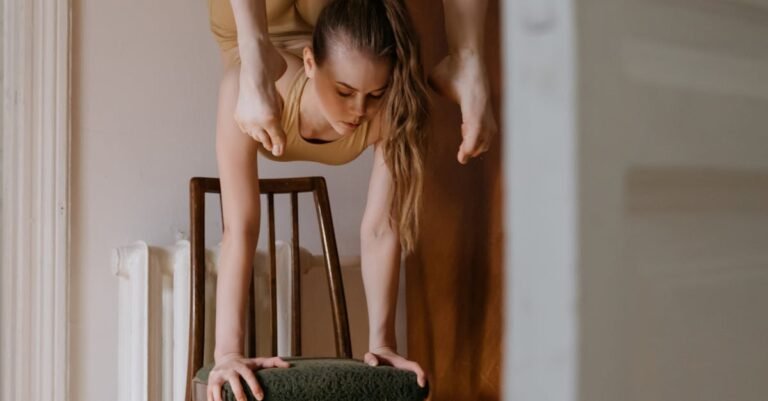Table Of Content
- Travel Workout Routine: Stay Fit On The Go
- Why Bother Staying Fit While Traveling?
- Planning Your Travel Fitness Strategy
- Bodyweight Bonanza: No Gym, No Problem!
- Leveraging Your Environment
- Fueling Your Body Right on the Road
- Finding Balance: Enjoy Your Trip!
- Conclusion: Your Fitness Journey Doesn’t Pause
- Frequently Asked Questions (FAQs)
Travel Workout Routine: Stay Fit On The Go
Let’s be honest, travel often throws our carefully crafted routines, especially fitness routines, right out the window. Between early morning flights, indulging in delicious local cuisine (hello, pasta in Rome!), and packed sightseeing schedules, finding time or motivation to squeeze in a workout can feel like mission impossible. You’re exploring new places, creating memories, and maybe, just maybe, letting your fitness goals slide a little. We’ve all been there! But what if I told you that staying active while traveling doesn’t have to be another chore on your itinerary? What if it could actually enhance your trip? Keeping up with a simple travel workout routine is more achievable than you think, and the benefits go way beyond just avoiding vacation weight gain. Ready to learn how to stay fit on the go without sacrificing the fun?
Why Bother Staying Fit While Traveling?
Okay, so you’re on vacation. Isn’t the whole point to relax and let loose? Absolutely! But incorporating some movement into your travels isn’t about punishing yourself; it’s about feeling your best so you can enjoy your trip to the fullest. Think of it as an investment in your travel experience.
The Sneaky Travel Weight Gain
Ah, the dreaded post vacation scale shock. It happens subtly. A few extra pastries here, larger portion sizes there, maybe more cocktails than usual, combined with less movement than your normal routine… it adds up! While enjoying local delicacies is a huge part of travel (and something you absolutely should do!), being completely sedentary can lead to unwanted pounds that are harder to shed when you get back home. Maintaining even a light level of activity helps counterbalance those extra calories and keeps your metabolism humming along.
More Than Just Muscles: Mental & Energy Boost
Beyond the physical, moving your body while traveling works wonders for your mind and energy levels. Feeling jet lagged? A quick workout can actually help reset your internal clock and combat fatigue better than another cup of coffee. Feeling stressed from navigating unfamiliar airports or busy tourist spots? Exercise is a fantastic stress buster, releasing endorphins that boost your mood. Ever notice how a good walk clears your head? Imagine starting your sightseeing day feeling energized and focused, rather than groggy. That burst of activity can give you the stamina needed for long days of exploring ancient ruins or wandering charming city streets. It’s not just about preventing weight gain; it’s about enhancing your overall well being during your trip.
Planning Your Travel Fitness Strategy
Like any successful trip, a good travel fitness plan starts before you even pack your bags. A little foresight goes a long way in making exercise feel less like an afterthought and more like a natural part of your adventure. Don’t worry, this doesn’t mean hours of complicated planning!
Know Before You Go: Researching Your Destination
Spending just 15 minutes researching your destination’s fitness potential can make a huge difference. What opportunities does your location offer?
Hotel Gyms & Local Parks
Check your hotel’s website or call ahead. Do they have a gym? What kind of equipment does it have? Knowing this can help you plan. Even a small space with basic cardio machines and free weights is a bonus. No hotel gym? No problem! Look up local parks or green spaces near where you’re staying using online maps. Many parks have walking/running paths, open areas perfect for bodyweight exercises, or even outdoor fitness stations. Some cities even offer free community fitness classes in parks – wouldn’t that be a cool local experience?
Walkability & Activity Opportunities
Is your destination pedestrian friendly? Choosing accommodation in a walkable area automatically builds activity into your day. Look at maps – can you walk to major sights, restaurants, or attractions instead of relying solely on transport? Also, consider activities inherent to the location. Are you heading to the mountains? Hiking is a fantastic workout. Going to the beach? Swimming, paddleboarding, or even just walking on the sand provides great resistance. Building these activities into your itinerary is a fun way to stay fit without feeling like you’re “working out”.
Packing Smart: Your Portable Gym Essentials
You don’t need to lug heavy dumbbells across continents! A few lightweight, versatile items can turn any hotel room or park space into your personal gym.
Resistance Bands: The Unsung Heroes
If I had to recommend just one piece of travel fitness gear, it would be resistance bands. They are incredibly lightweight, take up virtually no space in your luggage, and offer a surprisingly challenging full body workout. Loop bands are great for lower body exercises (think squats, glute bridges, lateral walks), while tube bands with handles allow for upper body moves like rows, bicep curls, and overhead presses. They provide variable resistance, meaning the harder you pull, the harder the exercise becomes, making them suitable for all fitness levels.
Jump Rope & Other Lightweight Gear
A jump rope is another fantastic, space saving cardio tool. Just a few minutes of jumping can get your heart rate soaring. Consider also packing things like workout clothes you can rinse and dry quickly, a good pair of comfortable walking/running shoes (this is non negotiable!), and maybe a small, foldable yoga mat if you enjoy floor work or stretching. Some people also like suspension trainers (like TRX), which can be anchored to doors, but resistance bands offer similar versatility with less bulk.
Bodyweight Bonanza: No Gym, No Problem!
Here’s the beautiful truth: your own body is the only piece of equipment you truly need to get a fantastic workout anywhere, anytime. Bodyweight exercises are the cornerstone of any effective travel workout routine because they require zero gear and minimal space.
Foundational Bodyweight Exercises
Mastering a few key bodyweight movements gives you a powerful arsenal for staying fit on the road. Focus on compound exercises that work multiple muscle groups simultaneously for maximum efficiency.
Squats, Lunges, Pushups, Planks: The Core Four
These four exercises form a solid foundation for a full body workout:
- Squats: Brilliant for legs and glutes. Stand with feet shoulder width apart, chest up, core engaged. Lower your hips back and down as if sitting in a chair, keeping your back straight and knees tracking over your toes. Go as low as comfortable, then push back up through your heels. Variations: Jump squats for cardio, sumo squats for inner thighs.
- Lunges: Target legs and glutes individually, improving balance. Step forward with one leg, lowering your hips until both knees are bent at roughly 90 degree angles. Ensure your front knee stays behind your toes and your back knee hovers just above the floor. Push off the front foot to return to the start. Alternate legs. Variations: Reverse lunges, walking lunges, curtsey lunges.
- Push ups: The classic upper body and core strengthener. Place hands slightly wider than shoulder width apart. Lower your chest towards the floor, keeping your body in a straight line from head to heels. Push back up. Variations: Knee push ups (easier), incline push ups (using a bed or chair), decline push ups (feet elevated).
- Planks: Incredible for core stability. Hold your body in a straight line, supported on your forearms (or hands) and toes. Engage your core, glutes, and quads. Don’t let your hips sag or rise too high. Variations: Side planks, planks with shoulder taps.
Don’t underestimate these basics! Doing them with good form consistently is far more effective than sloppy reps of complex moves.
Creating Quick & Effective Circuits
The best way to maximize your time and get both strength and cardio benefits from bodyweight exercises is through circuits. Instead of resting long periods between sets, you move quickly from one exercise to the next, keeping your heart rate up. Here are a few simple circuit ideas:
- AMRAP (As Many Rounds As Possible): Set a timer (e.g., 10 15 minutes) and complete a sequence of exercises (e.g., 10 squats, 10 push ups, 10 lunges per leg, 30 second plank) as many times as you can before the timer runs out. Rest only briefly when needed.
- Timed Intervals (Tabata Style): Choose one or two exercises. Work intensely for 20 seconds, then rest for 10 seconds. Repeat 8 times for a total of 4 minutes per exercise. This is fantastic for a quick cardio blast. Think jump squats or mountain climbers.
- For Reps: Choose 4 5 exercises. Perform a set number of reps for each (e.g., 15 reps). Move from one exercise to the next with minimal rest. Once you complete all exercises, that’s one round. Rest for 60 90 seconds and repeat for 3 4 rounds.
These circuits can be done in 15 30 minutes, making them easy to fit in before breakfast or after a day of sightseeing.
Leveraging Your Environment
Think outside the gym box! Your surroundings, whether it’s your hotel room, the airport terminal, or the city itself, offer countless opportunities for movement. Get creative and see your environment as your playground.
Hotel Room Hacks: Turning Your Room into a Gym
Your temporary home base can be surprisingly workout friendly:
- Chair/Bed Dips: Use a sturdy chair or the edge of your bed for triceps dips.
- Incline/Decline Push ups: Use the bed or desk for incline push ups (easier) or place your feet on them for decline push ups (harder).
- Step Ups: Use a stable chair or low step (if available) for step ups.
- Wall Sits: Find a clear wall space, slide down until your knees are at 90 degrees, and hold. Feel the burn!
- Luggage Rows: If you have a suitcase with some weight in it, you can use it for bent over rows (ensure a stable grip!).
- Small Space Cardio: Jogging in place, jumping jacks, high knees, butt kicks, mountain climbers – all require very little space.
Stairway to Fitness: Don’t Underestimate the Climb
Skip the elevator! Taking the stairs is one of the easiest ways to add activity to your travel days. Staying on the 5th floor? Consider it built in cardio. Need a more intense burst? Find a stairwell and do stair sprints (walk or jog down), take stairs two at a time, or do calf raises on the edge of a step. It’s a readily available, free, and surprisingly effective workout tool.
Park Bench Workouts & Urban Exploration
Exploring a new city is inherently active, especially if you do it on foot. Aim to walk as much as possible – you’ll see more and burn calories simultaneously. While you’re out exploring parks or plazas, look for opportunities:
- Bench Exercises: Park benches are perfect for step ups, incline/decline push ups, triceps dips, or even Bulgarian split squats (resting your back foot on the bench).
- Open Spaces: Find a patch of grass for stretching, yoga poses, or bodyweight circuits.
- Running/Walking Tours: Many cities offer guided running tours, a fantastic way to sightsee and get a workout. Or simply map out your own walking route hitting the major landmarks.
- Playgrounds: If appropriate (and not crowded with kids!), playgrounds can offer bars for pull ups (if you’re strong!) or elevated surfaces for various exercises.
Embrace the city as your gym. Every step counts!
Fueling Your Body Right on the Road
Exercise is only part of the equation. How you fuel your body while traveling significantly impacts your energy levels, recovery, and overall fitness goals. It’s not about deprivation, but about making smart, conscious choices most of the time.
Mindful Eating While Traveling
Indulging in local cuisine is essential, but mindful eating helps prevent overdoing it consistently. Try these tips:
- Prioritize Protein & Veggies: When ordering meals, try to include a lean protein source (grilled fish, chicken, beans, tofu) and plenty of vegetables. These keep you full and provide essential nutrients.
- Portion Awareness: Restaurant portions, especially in some countries, can be huge. Consider sharing entrees, ordering appetizers as mains, or simply stopping when you feel satisfied, not stuffed.
- Smart Snacking: Pack some healthy snacks like nuts, seeds, protein bars, or fruit to avoid grabbing unhealthy options when hunger strikes between meals or during transit.
- Listen to Your Body: Are you truly hungry, or just bored/tired? Pay attention to hunger cues.
- The 80/20 Rule: Aim to make healthy choices 80% of the time, leaving 20% for those special indulgences (like that amazing gelato!). This makes healthy eating sustainable and enjoyable during travel.
Staying Hydrated: The Simplest Fitness Hack
This sounds basic, but it’s incredibly important, especially when traveling. Flying, climate changes, and increased activity (even just walking) can lead to dehydration faster than you think. Dehydration zaps energy, causes headaches, can be mistaken for hunger, and hinders workout performance and recovery. Carry a reusable water bottle and refill it constantly. Aim to sip throughout the day, not just when you feel thirsty. If you’re drinking alcohol or coffee, make an extra effort to drink water alongside them.
Finding Balance: Enjoy Your Trip!
Okay, let’s bring it back to reality. You’re on vacation! The goal of a travel workout routine isn’t to replicate your intense home gym schedule or spend hours exercising when you could be exploring. It’s about finding a sustainable balance that works for you and your trip.
Maybe some days that means a dedicated 20 minute hotel room circuit. Maybe other days it just means choosing to walk for an hour instead of taking a cab, or taking the stairs instead of the lift. Maybe it means doing some stretching after a long flight. It all counts! Don’t beat yourself up if you miss a planned workout because an amazing, spontaneous opportunity came up. That’s what travel is about!
The key is consistency over intensity. Doing something most days is far better than doing nothing at all. Listen to your body. If you’re exhausted from travel and sightseeing, perhaps a gentle walk or some stretching is more beneficial than pushing through a high intensity workout. The aim is to feel good, maintain momentum, and return home feeling refreshed, not depleted or guilty. Make fitness a seamless part of your adventure, not a stressful obligation.
Conclusion: Your Fitness Journey Doesn’t Pause
Traveling the world and staying committed to your health and fitness don’t have to be mutually exclusive goals. With a little planning, a willingness to adapt, and the power of bodyweight exercises, you can absolutely stay fit on the go. Remember, it’s about integrating movement naturally into your travels – walking more, taking the stairs, squeezing in short, effective workouts using your environment or simple gear like resistance bands. Fuel your body mindfully, stay hydrated, and most importantly, find a balance that allows you to enjoy every moment of your adventure. Your fitness journey is a marathon, not a sprint, and it definitely doesn’t need to hit pause just because you’re exploring a new corner of the globe. So pack those walking shoes, maybe some resistance bands, and get ready to explore *and* stay active on your next trip!
Frequently Asked Questions (FAQs)
FAQ 1: How long should my travel workouts be?
A: Aim for consistency over duration. Even 15 20 minutes of focused activity most days can make a big difference. A short, high intensity circuit or a longer brisk walk both count! Listen to your body and schedule; something is always better than nothing.
FAQ 2: What if I *really* don’t have time to work out?
A: Focus on incorporating movement into your day naturally. Prioritize walking whenever possible – explore cities on foot, take walking tours. Always choose stairs over elevators or escalators. Even simple things like doing calf raises while waiting in line or stretching before bed contribute. Maximize NEAT (Non Exercise Activity Thermogenesis) – the calories burned from daily activities outside of formal exercise.
FAQ 3: Can I still enjoy local food?
A: Absolutely! Trying local cuisine is a highlight of travel. The key is balance and mindfulness. Don’t feel you need to restrict yourself completely. Savor the special treats, but try to make generally healthy choices for your regular meals (lean protein, veggies). Practice portion control and stay active to help offset indulgences. Remember the 80/20 rule.
FAQ 4: What’s the best single piece of equipment to pack?
A: Resistance bands (specifically loop bands and tube bands with handles) offer the most versatility for a full body workout while taking up minimal space and weight in your luggage. They allow for both upper and lower body strength training with adjustable resistance.
FAQ 5: How do I stay motivated when my routine is disrupted?
A: Shift your mindset. Instead of aiming for perfection, aim for “good enough”. Set realistic, small goals (e.g., “walk 10,000 steps today” or “do a 15 minute workout 3 times this week”). Focus on how exercise makes you *feel* – more energized, less stressed. Remind yourself that staying active enhances your travel experience. And don’t beat yourself up if you miss a day; just get back on track the next.

